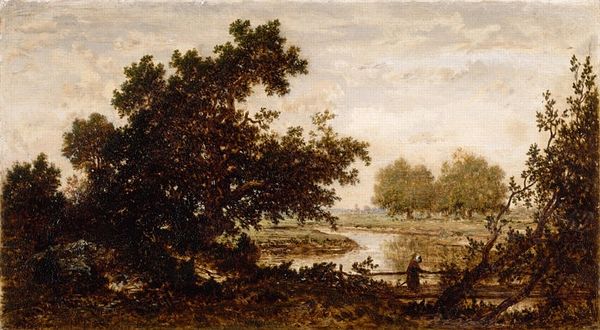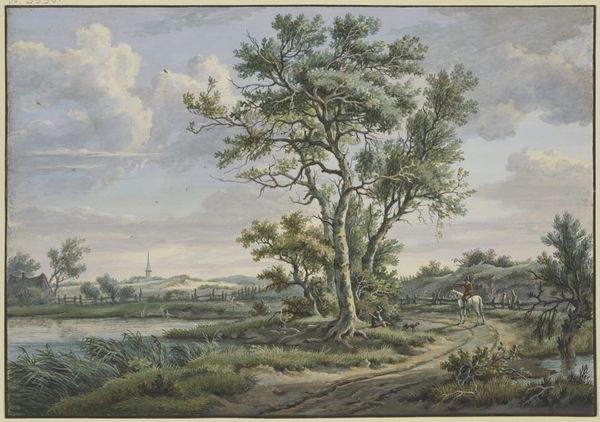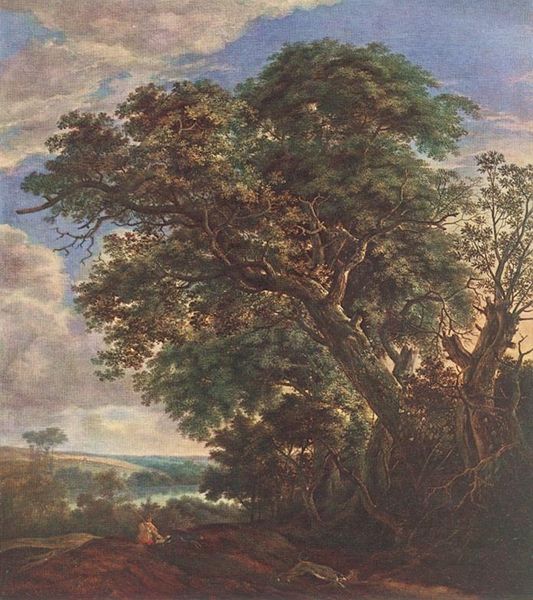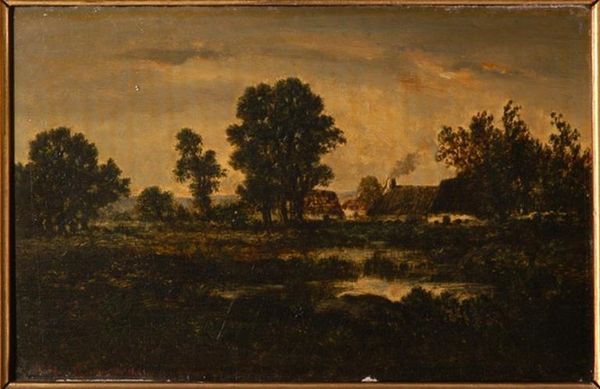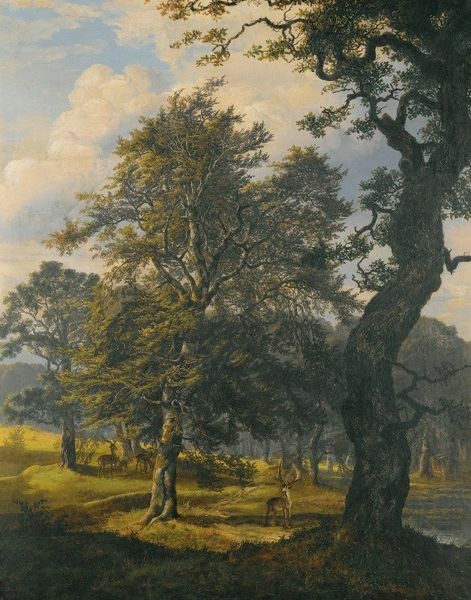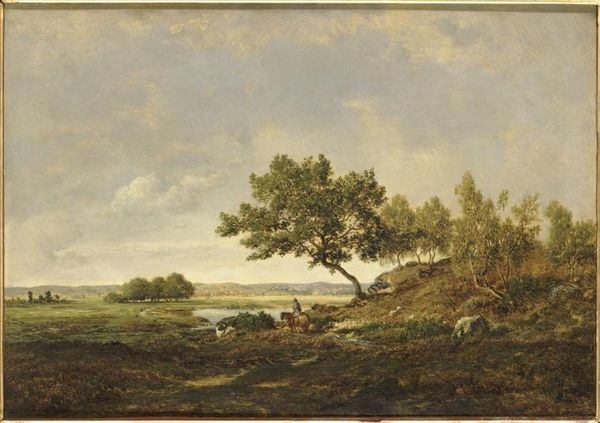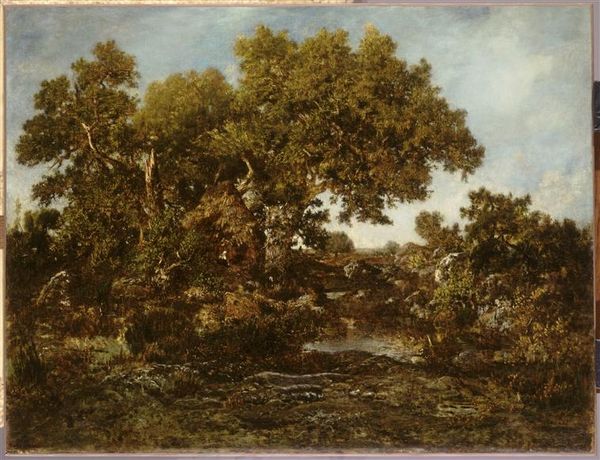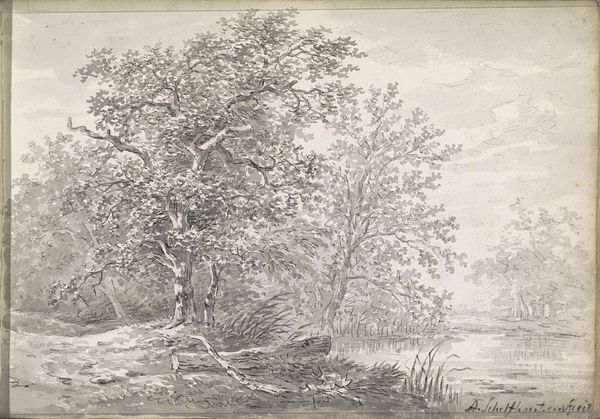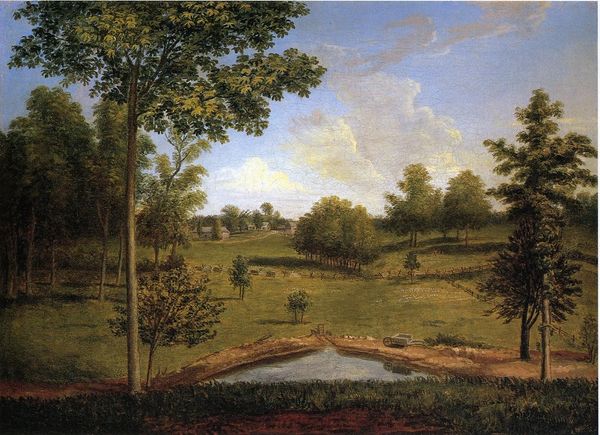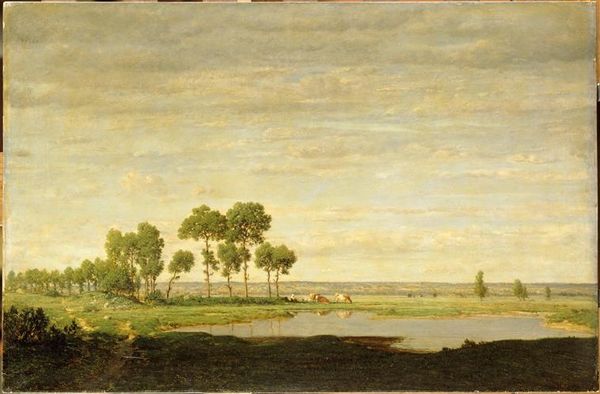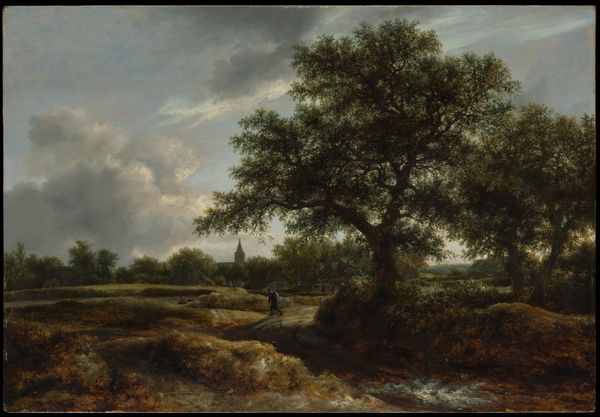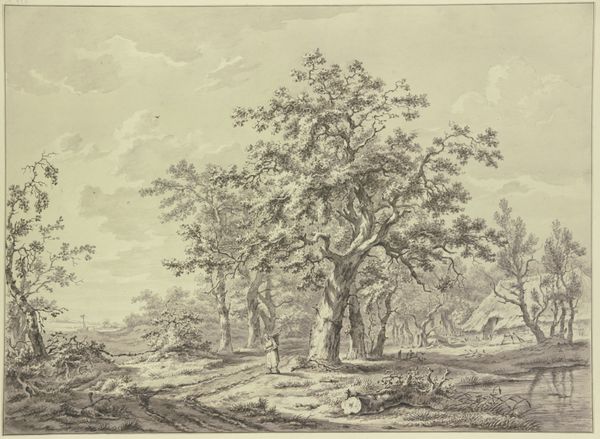
painting, plein-air, oil-paint, impasto
#
tree
#
sky
#
lake
#
painting
#
plein-air
#
oil-paint
#
landscape
#
impressionist landscape
#
oil painting
#
impasto
#
forest
#
romanticism
#
history-painting
#
academic-art
#
realism
Dimensions: 26 x 37 cm
Copyright: Public domain
Editor: This painting, “The Pond,” is by Theodore Rousseau, rendered with oil paint, seemingly en plein air. I'm struck by how earthy the palette is, almost like looking at raw pigment. What catches your eye? Curator: What I see is the material process and its grounding in social context. Consider Rousseau’s choice of oil paint applied with visible impasto. This wasn’t merely about depicting nature; it was about demonstrating a specific kind of artistic labor. Oil paint at this time became readily available through industrial manufacture and was marketed to appeal to shifting trends, making painting more widely accessible. This contrasted with the highly regulated studio practices of the academy, thereby placing value on what might be described as ‘authentic’ or ‘direct’ experience. Editor: So, the visible brushstrokes aren't just about depicting texture, they're about the act of painting itself? Curator: Precisely. The emphasis on the materiality – the texture of the paint, the artist's direct interaction with the landscape – becomes paramount. This brings into question not just the 'what' of representation, but the 'how' and 'why'. What impact did industrialized paint production have on art accessibility at that time, or on outdoor sketching? Editor: That makes me wonder how his landscapes related to wider consumption patterns and the shift towards more leisure time for certain segments of society. I suppose the accessibility of paints speaks to new social groups producing works of art, and these subjects catered to a market of an expanding urban class searching for nature? Curator: Yes, and considering these socio-economic underpinnings pushes us to recognize paintings such as Rousseau’s not just as depictions of serene natural settings, but as artifacts deeply embedded within and reflective of a complex industrializing society and its stratified patterns of leisure. I've definitely learned from thinking about this. Editor: Absolutely! Looking at the availability of materials adds another dimension that really reveals new insights to consider when we're analyzing landscapes like this one.
Comments
No comments
Be the first to comment and join the conversation on the ultimate creative platform.
